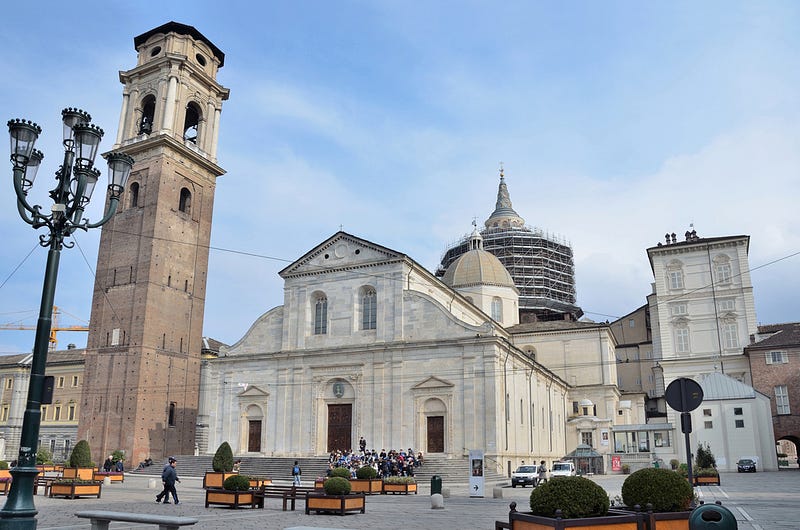The Enigma of the Shroud of Turin: A Deep Dive into History
Written on
Chapter 1: Introduction to the Shroud
The Shroud of Turin is an ancient linen cloth that appears to depict the image of a crucified man, widely believed to be Jesus Christ. This artifact has garnered extensive attention and scrutiny, making it one of the most analyzed objects throughout history. The volume of research surrounding the shroud is staggering, amounting to countless hours of investigation; however, debates about its authenticity persist. Scholars have yet to conclusively determine whether the shroud is a genuine relic or a forgery.
A key controversy revolves around the carbon dating conducted on the shroud. In 1988, portions of the cloth were tested in labs across Switzerland, England, and the United States, yielding a carbon-14 dating that dated the shroud to between 1260 and 1390 A.D. The conclusion drawn was that the shroud was a medieval fabrication.
However, a 2011 study by Italian researchers suggested that the samples tested may have originated from a section of the shroud that had undergone restoration by nuns after a fire during the Middle Ages. Their investigations utilizing infrared light and spectroscopy indicated that the shroud could date back to between 280 B.C. and 220 A.D.
In 2018, two Italian researchers conducted an experiment involving both real and artificial blood on a mock shroud to assess whether the blood stains corresponded with biblical accounts. Their findings suggested discrepancies between the blood patterns observed on the shroud and biblical descriptions, raising further questions about their experimental approach.
Given that the shroud has been moved, handled, and displayed numerous times since the 14th century, it is unsurprising that establishing its origins has proved challenging. The shroud represents such a complex subject of study that summarizing all research in this brief overview is impossible, and each new investigation typically leads to more inquiries. A fundamental question remains unanswered: scientists are still baffled by how the image became imprinted on the cloth.
The shroud is currently preserved at the Cathedral of Saint John the Baptist in Turin, Italy, housed in a secure, airtight container designed to protect it from environmental factors. This container maintains strict humidity and temperature controls, filled with 95% argon gas and 0.5% oxygen to ensure the shroud’s longevity.

Chapter 2: Historical Context of the Shroud
The Shroud of Turin's documented history begins in 1353 when a French knight named Geoffroi de Charny presented it to a monastery in Lirey, France. Prior to this point, there are no known records of the shroud. In 1389, Bishop Pierre d’Arcis of Troyes communicated with Pope Clement VII, asserting that the shroud was a forgery and that an artist had admitted to creating it. The pope ruled that the shroud could not be considered a relic of Jesus Christ, yet permitted its display as an “icon.”
In 1453, the shroud was sold by de Charny’s granddaughter, Margaret, to the House of Savoy, which later became the ruling family of Italy, in exchange for two castles. As a consequence of this transaction, she was excommunicated from the Catholic Church.
Following its sale, the shroud was relocated to Chambéry, France, where it suffered fire damage in 1532. As previously noted, nuns repaired the cloth during this period. Eventually, in 1578, the shroud was transferred to its present location in Turin, Italy, by the Savoy family, where it was placed in the chapel of the Cathedral of Saint John the Baptist.
Research on the shroud commenced in 1898 when amateur photographer Secondo Pia discovered that the negative of a photograph he took revealed the image of a bearded man bearing wounds. The first formal scientific examination took place in 1969, followed by the Shroud of Turin Research Project in 1978, during which scientists were granted five continuous days to study the shroud.
It is worth noting that the Vatican does not officially recognize the Shroud of Turin as a relic, choosing to refer to it as an “icon.” The Catholic Church has not issued a definitive stance on the authenticity of the shroud, although it assumed legal ownership in 1983.
For additional insights, consider exploring Knowledge Stew’s Fact World on Medium.

Video Insertions
The first video titled History's Mysteries - The Shroud Of Turin (History Channel Documentary) provides an in-depth exploration of the historical and scientific significance of the shroud.
The second video, Mystery of the Sacred Shroud [1997] Documentary | Richard Burton, delves into the enigmatic aspects surrounding the shroud’s origins and its ongoing controversies.